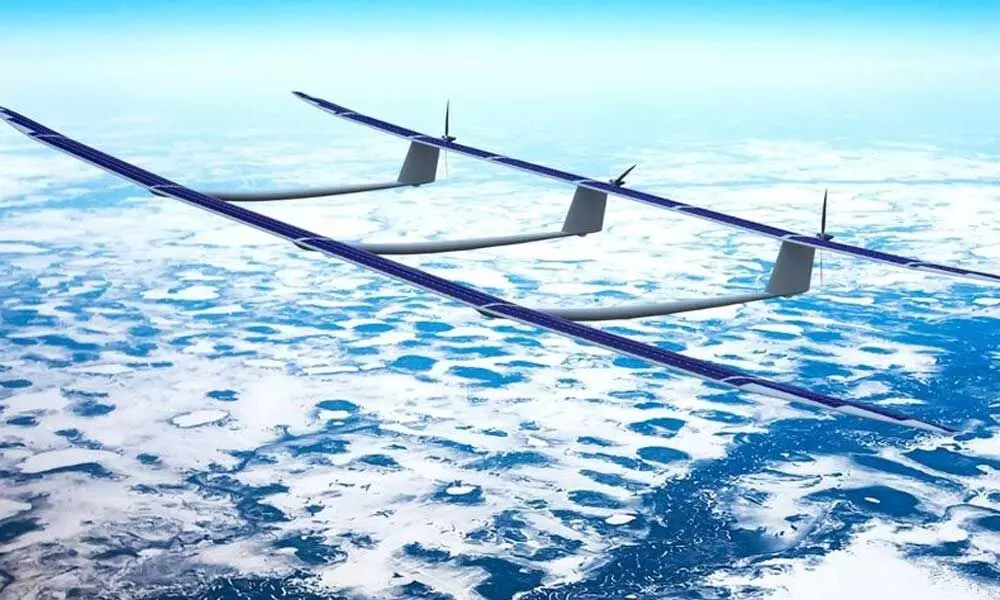HAL to partner with Bengaluru start-up to develop HAPS

Zephyr is the world's leading solar-electric stratospheric Unmanned Aerial System developed by UA0
Approval for High Altitude Pseudo Satellite likely soon
Bengaluru: The Hindustan Aeronautics Limited (HAL) will soon get the approval to develop a futuristic High Altitude Pseudo Satellite (HAPS). The programme is spearheaded by the HAL in partnership with a Bengaluru based start-up. It is learnt from the sources that the approval to fund the project is expected early this month.
Highly placed sources in the HAL told The Hans India, "The approval will come and it will take a minimum of 3-4 years to develop HAPS before it is inducted. HAL is already working on its design. It is a giant leap in technology. It will weigh more than 500 kg, will be solar energised and can fly at 70,000 feet and stay there for months."
The plan was revealed during the Aero India. HAPS are unmanned aircraft operating in the stratosphere at an altitude of 70,000 feet. The solar-powered aircraft are designed to act as a bridge between the Unmanned Aerial Vehicles (UAV) and the conventional satellites.
On being aligned with HAL developed unmanned warfare programme CATS, HAPS could coordinate in strike missions providing communication to the troops with live video feeds and images. This could also help in determining if the mission is successful
During Aero India, HAL said that it will be teaming up unmanned aircraft and vehicles with manned jets. The project will be such that a manned aircraft will operate within the boundary and the unmanned aircraft will enter the enemy zone and can carry out strikes deep inside the enemy territory.
The Combined Air Teaming System (CATS) developed by the public sector giant Hindustan Aeronautics Limited (HAL) will redefine aerial warfare. The latest technological leap was conceived more than two years ago. UAVs have been carrying out all the missions solo but with the development of Artificial Intelligence (AI), machine learning and deep learning they can carry out missions autonomously without any control from the ground. This gives them an opportunity to execute teaming. They can be small as they do not have a pilot inside. But when they are small the sensors are small and the range becomes smaller. Therefore, they need a manned aircraft to aid them in firing long range weapons. For the past one year the HAL has been working on how to develop teaming which is based on AI.
Commenting on the development of technology a serving IAF pilot said that it is the need of the hour as the nation cannot afford to keep going back to the drawing board after every terror strike.
"We need to plan in advance. HAPS could be a game changer and could be used in Humanitarian Assistance Disaster Relief (HADR) operations as well," the pilot further added.
In 2018, Airbus Defence and Space unveiled Zephyr S next generation HAPS at Farnborough Air Show.

















